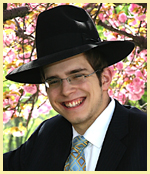| Respecting Others
According to the opinion that the 24,000 students of Rabbi Akiva who died between Pesach and Shavuos had a brief respite on Lag Baomer, we can appreciate the relevance of a number of Torah thoughts regarding Lag Ba’omer.
The Gemara tells us that the students of Rabbi Akiva died because they didn’t show proper respect to one another.
Each week of Sefirah corresponds to a different Midah (attribute) epitomized by one of the Ushpizin. This week is the Midah of Hod, epitomized by Aharon. The specific Midah for Lag Baomer is ‘hod shebi’hod’, i.e. completely Aharon’s midah. We know that Aharon was the quintessential ‘Oheiv Shalom Vi’rodeif Shalom,’ the lover and pursuer of peace.
There is a custom to learn and work on one of the 48 ways to acquire Torah each day of Sefirah, and on the last day to review and incorporate all of them. The thirty-third kinyan-acquisition is Ahavas Habriyos-loving people. Additionally, my friend Zecharya Michelson pointed out that the thirty-third travel spot of Klal Yisroel in the Midbar was Hor Hahor, the place where Aharon was buried!
So perhaps the reason that none of the Talmidim died on Lag Baomer was because they were able to overcome their issue of not showing proper respect to each other by tapping into the midah of the day; the midah of loving and respecting people and pursuing peace like Aharon!
This week’s Parsha discusses the Halachos of the Kohanim. On the one hand, the Kohanim are all descendants of Aharon, the Ohev Shalom and Rodeif Shalom; yet simultaneously, the Kohanim [and all the Bnei Levi] are the ones who killed the sinners of the Golden Calf.
Is that a contradiction? Absolutely not. When it comes to wicked sinners and heretics, we have no tolerance and acceptance. However, when it comes to our fellow Jews who try to follow Hashem’s will, we must learn to appreciate each other for each person’s contributions to Klal Yisroel.
We are twelve Shvatim with twelve different personalities and approaches to Yiddishkeit. Each Shevet walked through the Yam Suf on its own path, but the water was transparent! The lesson is clear: we have different paths and approaches, but we must be able to ‘see’ and respect each other.
[Editor’s note: This idea of appreciating another Jew was something that Shaya lived by. There was no concept of ‘well, he doesn’t wear the same color hat or shirt as me.’ It was always about finding a connection with another Jew and trying to infuse that person with true warmth. Shaya’s family really only understood how much Shaya epitomized this by his Levaya and Shivah. There were a lot of people from all different backgrounds that came to his levaya and shivah and told the family how much Shaya connected to them. In the words of one of his neighbors, “Shaya was an ordinary person. He knew how to talk to someone on their level.” Shaya was able to relate to others because he breathed this principle of respecting other people no matter what kind of background they may have had. May we all try to work on ourselves to have the abilty to look beyond the externals and see the inner beauty of the Jewish People.] |





